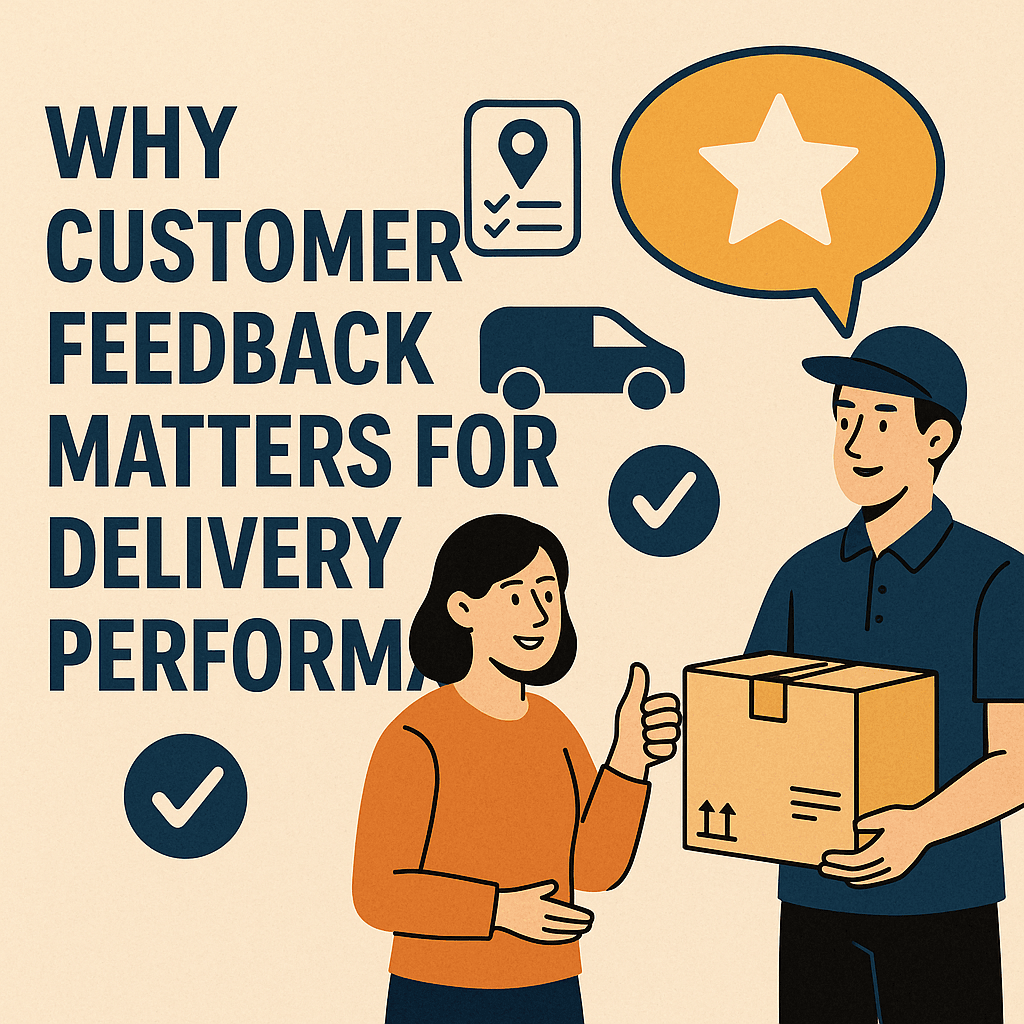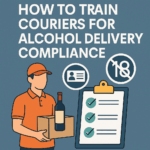In the fast-moving world of delivery and logistics, performance is everything. Businesses are investing heavily in route optimization, tracking software, and same-day delivery services to meet growing customer expectations. But while technology and operations are crucial, one often-overlooked driver of performance is customer feedback.
Customer feedback offers real-world insights into how your delivery service is perceived, what’s working, and—most importantly—what’s not. From pinpointing delays to highlighting outstanding service, feedback is one of the most powerful tools for continuous improvement in courier operations.
In this blog post, we’ll explore in-depth why customer feedback matters for delivery performance, supported by real-world examples, actionable strategies, and data-backed facts.
1. What Is Customer Feedback in Delivery Services?
Customer feedback refers to comments, ratings, reviews, complaints, and suggestions shared by recipients after a delivery. This feedback can be:
- Structured: Star ratings, yes/no survey responses, Net Promoter Scores (NPS)
- Unstructured: Open-text comments, social media mentions, phone complaints
- Passive: Online reviews, social media comments
- Active: In-app surveys, post-delivery emails or SMS prompts
For delivery businesses, every touchpoint—delivery speed, courier professionalism, packaging condition, real-time tracking—can generate feedback. This data, when gathered and analyzed properly, forms the backbone of performance monitoring.
2. The Link Between Customer Feedback and Delivery Performance
a) Identifies Weak Points in the Last Mile
The “last mile” is often the most expensive and challenging part of delivery. It accounts for 53% of total shipping costs (Source: Business Insider). Feedback helps companies understand:
- Where delays are occurring
- Which couriers consistently underperform
- If customers are receiving damaged goods
- How real-time tracking impacts satisfaction
By listening to the customer, businesses can identify trends and issues that internal data might miss.
b) Improves Courier Accountability
When customers leave feedback about a delivery agent—positive or negative—it adds an extra layer of courier accountability. Couriers are more likely to follow protocol, deliver packages carefully, and communicate clearly when they know performance is tracked and rated.
This isn’t about micromanagement; it’s about fostering a culture of excellence.
c) Enables Data-Driven Decision-Making
Customer feedback isn’t just anecdotal—it’s data. When compiled, categorized, and analyzed, it becomes a strategic asset.
- Do delays happen more in certain postcodes?
- Are certain time windows leading to more complaints?
- Do customers prefer contactless delivery?
All of these insights can inform policy changes, training programs, or route adjustments.
3. Real-World Stats That Prove the Value of Customer Feedback
Let’s look at some industry statistics that underline the importance of customer feedback in logistics:
- 80% of customers say the experience a company provides is as important as its products or services (Salesforce).
- Companies that actively collect and act on customer feedback experience 10–15% increase in customer retention (Gartner).
- According to PwC, 32% of customers will stop doing business with a brand they love after just one bad experience.
These stats show that delivery performance isn’t just logistics—it’s customer experience.
4. Types of Feedback That Impact Delivery Performance
a) Delivery Time Feedback
If customers consistently report late deliveries or unreliable time slots, that feedback is gold. It can:
- Trigger route optimization reviews
- Indicate traffic congestion issues
- Identify unrealistic promises made at checkout
b) Courier Behavior Feedback
Couriers are the face of your brand. If feedback indicates rude behavior, lack of communication, or failure to follow instructions (e.g., “leave in a safe place”), it may be time to implement:
- New training programs
- Refresher courses on customer service
- Disciplinary action policies for repeat offenders
c) Packaging and Condition Feedback
Whether you’re delivering food, electronics, or fashion, the condition of the package on arrival speaks volumes. Feedback in this area can prompt:
- Stronger packaging protocols
- Better handling practices
- Improved storage in vehicles
d) Communication and Tracking Feedback
Customers now expect real-time updates—from “order out for delivery” to “delivered.” If feedback shows confusion or dissatisfaction in this area, it may be time to upgrade:
- App notifications
- SMS tracking
- Email alerts
5. The Role of Feedback in Optimising Delivery Routes
Let’s say you operate in a city with traffic bottlenecks in specific zones. Customers in those zones consistently report late deliveries.
Without feedback, you might rely solely on GPS data. But when multiple customer complaints corroborate the delay, you can:
- Adjust estimated delivery times
- Re-sequence delivery stops
- Allocate more couriers to high-density areas
This combination of operational data and customer feedback leads to more accurate ETAs and better customer satisfaction.
6. How Feedback Helps Build Trust and Loyalty
In a competitive space like delivery and logistics, trust is your differentiator. Fast shipping matters, but so does how you respond to problems.
When customers leave feedback and see action taken, it:
- Builds trust
- Increases repeat business
- Encourages positive word-of-mouth
According to Microsoft, 96% of customers say customer service is important in their choice of loyalty to a brand. Feedback, when acted on, is customer service in action.
7. How to Collect Delivery Feedback Effectively
a) In-App Ratings and Surveys
Apps like Uber Eats, Amazon, or Getfor’s own services prompt users to leave star ratings and comments after each delivery. This real-time feedback is crucial.
Best practices:
- Ask for feedback right after delivery
- Keep it short (1–3 questions)
- Offer optional comments
b) Email or SMS Follow-Ups
A polite SMS or email asking, “How was your delivery today?” gets a high response rate, especially with a quick survey link or rating button.
c) QR Codes on Delivery Notes
Leave a QR code with the parcel that links to a short form. This is great for retailers and last-mile couriers delivering for third-party platforms.
d) Customer Support Channels
Social media, chatbots, and helplines often capture spontaneous feedback. Use AI tools or human moderation to extract themes and sentiment trends.
8. Using AI and Automation to Analyze Feedback
Manually sorting through 10,000 feedback entries is inefficient. Instead, use tools like:
- Sentiment analysis software (e.g., MonkeyLearn, Lexalytics)
- Feedback categorization platforms
- Customer Experience dashboards (like Zendesk, Medallia, or Getfor’s internal dashboard)
These tools help you:
- Spot trends
- Identify recurring issues
- Prioritize action points
9. Acting on Feedback: From Data to Delivery Improvements
Example 1: Reducing Failed Deliveries
Feedback highlights that many customers are unavailable during the day. Solution? Offer evening delivery slots or allow users to choose a preferred window.
Result: 20% drop in failed deliveries and improved customer reviews.
Example 2: Improving Courier Training
Feedback shows recurring complaints about package mishandling. You introduce a new courier induction program focused on package care.
Result: Customer satisfaction scores rise by 15%.
10. Closing the Feedback Loop
Collecting feedback is only half the job. Closing the loop means:
- Acknowledging the feedback: Send thank-you emails or confirm that the complaint has been received.
- Acting on the feedback: Implement changes, fix issues, re-train staff.
- Following up: Let the customer know their feedback led to improvement.
This builds a feedback culture—where customers feel heard, and employees see feedback as a tool for growth, not criticism.
11. Feedback Drives Innovation in Delivery Services
Some of the biggest innovations in delivery logistics have come directly from customer needs:
- Live tracking
- Contactless delivery
- Delivery lockers
- Photo confirmation of delivery
- Real-time ETA adjustments
All of these were born from listening to customers. If you’re not tapping into feedback, you’re likely missing the next big thing your market wants.
12. How Getfor Uses Customer Feedback to Improve Delivery Performance
At Getfor, we treat every piece of feedback as a performance insight. Whether it’s a 5-star review or a complaint about a missed delivery window, we use that data to:
- Optimize routes
- Train couriers
- Improve app features
- Set realistic expectations
Our feedback loop is fully integrated with our logistics system, allowing us to improve delivery KPIs like on-time rate, NPS, and customer retention.
Conclusion: Make Feedback Your Competitive Advantage
In the logistics industry, delivery performance is not just about speed—it’s about experience, trust, and adaptability. Customer feedback gives you the lens to view your operations from the eyes of your end user.
By actively collecting, analyzing, and acting on feedback, delivery businesses can:
- Identify inefficiencies
- Enhance the customer experience
- Build loyalty
- Innovate ahead of the curve
In a landscape where customer expectations are rising, feedback isn’t optional—it’s essential.


